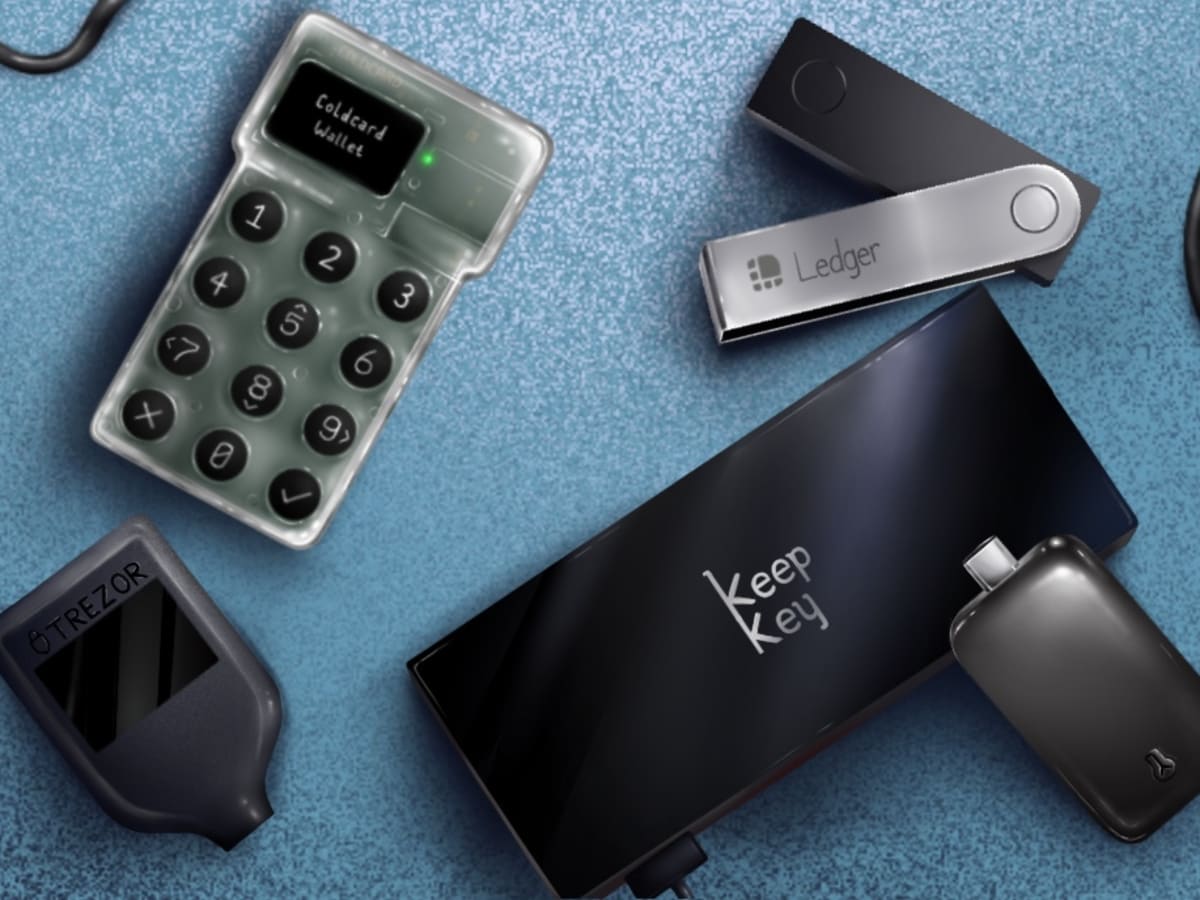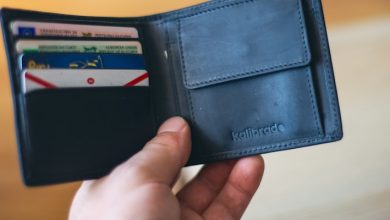Reviews of Hardware Wallets

- What is a hardware wallet and why do you need one?
- Comparing the top hardware wallets on the market
- Pros and cons of using a hardware wallet for storing cryptocurrency
- How to set up and use a hardware wallet securely
- Tips for choosing the best hardware wallet for your needs
- The future of hardware wallets: innovations and advancements
What is a hardware wallet and why do you need one?
A hardware wallet is a physical device that securely stores the private keys necessary to access your cryptocurrency. Unlike software wallets, which are connected to the internet and therefore vulnerable to hacking, hardware wallets keep your keys offline, providing an extra layer of security. This makes them an essential tool for anyone serious about protecting their digital assets.
There are several reasons why you might need a hardware wallet. Firstly, they offer protection against online threats such as malware and phishing attacks, which can compromise the security of your funds. Additionally, hardware wallets are immune to keyloggers, which are malicious programs that record keystrokes to steal sensitive information.
Furthermore, hardware wallets are easy to use and offer a high level of convenience. Most devices come with a user-friendly interface that makes it simple to send and receive cryptocurrency. Additionally, many hardware wallets support a wide range of digital assets, allowing you to store all your coins in one secure location.
Comparing the top hardware wallets on the market
When it comes to choosing a hardware wallet for storing your cryptocurrency, it’s important to compare the top options on the market to find the one that best suits your needs. Here is a comparison of some of the most popular hardware wallets available:
- Trezor: Trezor is known for its user-friendly interface and high level of security. It supports a wide range of cryptocurrencies and offers features such as a built-in display for verifying transactions.
- Ledger Nano S: The Ledger Nano S is another popular choice, offering support for a large number of cryptocurrencies and a compact design that makes it easy to carry around.
- KeepKey: KeepKey is a hardware wallet with a sleek design and a large display for easy navigation. It supports a smaller number of cryptocurrencies compared to Trezor and Ledger, but is still a solid option for storing your digital assets.
When comparing these hardware wallets, consider factors such as security features, ease of use, supported cryptocurrencies, and price. Ultimately, the best hardware wallet for you will depend on your individual needs and preferences.
Pros and cons of using a hardware wallet for storing cryptocurrency
When it comes to storing cryptocurrency, using a hardware wallet has its own set of advantages and disadvantages.
- Pros:
- Enhanced security: Hardware wallets are considered one of the most secure ways to store cryptocurrency as they are offline and less susceptible to hacking.
- Protection against malware: Since hardware wallets are not connected to the internet, they are immune to malware attacks that can compromise the security of your funds.
- Easy backup and recovery: Most hardware wallets come with a seed phrase that can be used to recover your funds in case the wallet is lost or damaged.
- Convenience: Hardware wallets are portable and can be easily carried around, allowing you to access your funds whenever you need them.
- Cons:
- Cost: Hardware wallets can be expensive compared to other storage options such as software wallets or exchanges.
- Learning curve: Using a hardware wallet may require some technical knowledge, which can be daunting for beginners.
- Physical vulnerability: While hardware wallets are secure from online threats, they can still be lost, stolen, or damaged physically.
Overall, using a hardware wallet for storing cryptocurrency provides a high level of security and peace of mind, but it comes at a cost and requires some technical know-how to use effectively.
How to set up and use a hardware wallet securely
To set up and use a hardware wallet securely, follow these steps:
1. **Choose a reputable hardware wallet**: Before setting up your hardware wallet, make sure to choose a reputable brand that is known for its security features. Research different options and read reviews to find the best one for your needs.
2. **Unbox your hardware wallet**: Once you have chosen a hardware wallet, unbox it carefully and make sure all the components are included. This usually includes the hardware wallet device, a USB cable, and instructions for setup.
3. **Connect your hardware wallet to your computer**: Use the USB cable to connect your hardware wallet to your computer. Make sure your computer is free from any malware or viruses that could compromise the security of your hardware wallet.
4. **Set up a PIN**: When setting up your hardware wallet for the first time, you will be prompted to create a PIN. Choose a PIN that is unique and not easily guessable. This PIN will be used to access your hardware wallet in the future.
5. **Write down your recovery seed**: During the setup process, you will be given a recovery seed – a series of words that can be used to recover your wallet if it is lost or stolen. Write down this recovery seed on a piece of paper and store it in a safe place.
6. **Transfer your cryptocurrency**: Once your hardware wallet is set up, you can transfer your cryptocurrency to it for safekeeping. Follow the instructions provided by your wallet provider to transfer your funds securely.
7. **Use your hardware wallet securely**: When using your hardware wallet, make sure to keep your PIN and recovery seed secure. Avoid sharing this information with anyone and be cautious when entering your PIN on your device.
By following these steps, you can set up and use your hardware wallet securely to protect your cryptocurrency investments. Remember to keep your hardware wallet and recovery seed in a safe place to prevent unauthorized access to your funds.
Tips for choosing the best hardware wallet for your needs
When looking for the best hardware wallet to store your cryptocurrency, there are several factors to consider to ensure you make the right choice. Here are some tips to help you choose the best hardware wallet for your needs:
1. **Security**: The most important factor to consider when choosing a hardware wallet is security. Look for wallets that offer advanced security features such as PIN protection, passphrase support, and secure element chips to keep your funds safe from hackers.
2. **Supported cryptocurrencies**: Make sure the hardware wallet you choose supports the cryptocurrencies you plan to store. Some wallets only support a limited number of coins, so check the compatibility list before making a decision.
3. **User interface**: Consider the user interface of the hardware wallet. Look for a wallet that is easy to use and navigate, with clear instructions for setting up and using the device.
4. **Backup and recovery**: Choose a hardware wallet that offers a secure backup and recovery process. This will ensure that you can access your funds even if your wallet is lost or damaged.
5. **Price**: Compare the prices of different hardware wallets to find one that fits your budget. Keep in mind that while some wallets may be more expensive, they often offer better security features and support a wider range of cryptocurrencies.
By considering these factors and doing thorough research, you can choose the best hardware wallet for your needs and keep your cryptocurrency safe and secure.
The future of hardware wallets: innovations and advancements
As technology continues to advance, the future of hardware wallets is filled with exciting innovations and advancements. These devices are becoming more secure, user-friendly, and versatile, making them an essential tool for anyone looking to protect their cryptocurrency investments.
One of the key advancements in hardware wallets is the integration of biometric authentication, such as fingerprint scanners or facial recognition technology. This adds an extra layer of security, making it even more difficult for unauthorized users to access your funds.
Another innovation in hardware wallets is the development of multi-signature capabilities. This feature allows multiple users to sign off on transactions, increasing security and reducing the risk of unauthorized transfers.
Furthermore, advancements in hardware design have made wallets more durable and resistant to physical tampering. Some devices now come with tamper-evident seals or anti-tamper coatings to alert users if the device has been compromised.
Overall, the future of hardware wallets looks promising, with continued advancements in security, usability, and design. These devices will play a crucial role in safeguarding the growing number of cryptocurrency assets, providing peace of mind to investors and users alike.



